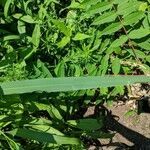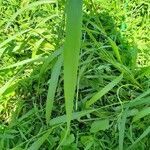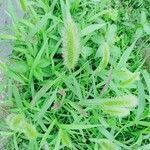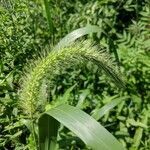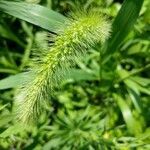Much like S. viridis var. viridis, but more robust, 5–20 dm; blades 15–30 × 1–2 cm, scabrous on both sides and bearing long, soft, papillose-based hairs above; infls 6–20 cm, drooping from near the base; spikelets 2.5–3 mm, subtended by 1–6 (usually 3) bristles, the second glume two-thirds to three-fourths as long as the more strongly rugose fertile lemma; sterile lemma with a palea two-thirds as long; 2n=36. Native of e. Asia, now widespread in our range as a weed of fields and waste places.
